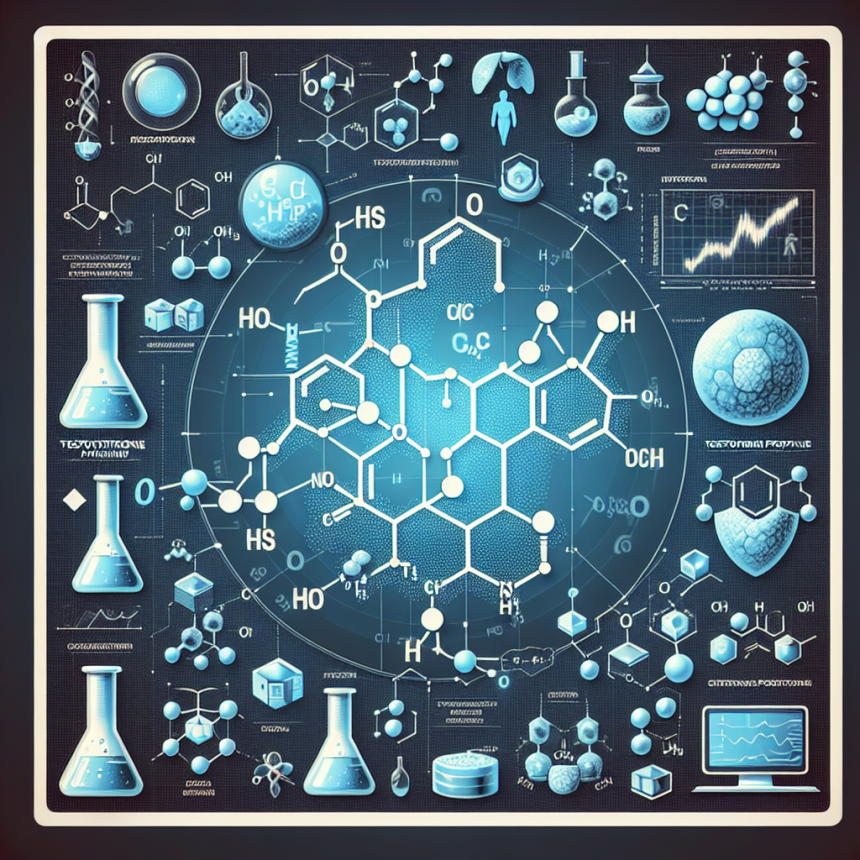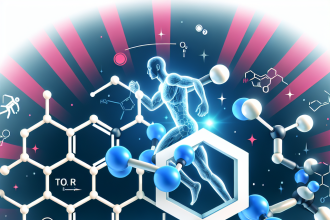-
Table of Contents
Testosterone Propionate: A Comprehensive Analysis in the Context of Anti-Doping Measures
Testosterone propionate is a synthetic androgenic-anabolic steroid that has been used for decades in the world of sports and bodybuilding. It is a fast-acting ester of testosterone, with a half-life of approximately 2-3 days, making it a popular choice among athletes looking for quick results. However, its use has been surrounded by controversy due to its potential for abuse and its inclusion on the World Anti-Doping Agency’s (WADA) list of prohibited substances. In this article, we will provide a comprehensive analysis of testosterone propionate, including its pharmacokinetics, pharmacodynamics, and its role in anti-doping measures.
Pharmacokinetics of Testosterone Propionate
Testosterone propionate is a synthetic form of testosterone, the primary male sex hormone responsible for the development of male characteristics such as muscle mass, strength, and libido. It is administered via intramuscular injection and is rapidly absorbed into the bloodstream. Once in the bloodstream, it is quickly metabolized by the liver and converted into its active form, dihydrotestosterone (DHT). DHT is responsible for the androgenic effects of testosterone, such as increased muscle mass and strength.
The half-life of testosterone propionate is approximately 2-3 days, meaning that it is quickly eliminated from the body. This short half-life makes it a popular choice among athletes who are subject to drug testing, as it can be cleared from the body relatively quickly. However, this also means that frequent injections are necessary to maintain stable blood levels of the drug.
Pharmacodynamics of Testosterone Propionate
The pharmacodynamics of testosterone propionate are similar to those of other testosterone esters. It binds to androgen receptors in various tissues, including muscle, bone, and the central nervous system, leading to an increase in protein synthesis and muscle growth. It also has a strong androgenic effect, leading to increased aggression and competitiveness, which can be beneficial for athletes in certain sports.
Testosterone propionate also has the potential to increase red blood cell production, leading to improved oxygen delivery to muscles and increased endurance. This can be advantageous for endurance athletes, but it also raises concerns about its potential for abuse in sports where increased endurance is a significant advantage.
Testosterone Propionate and Anti-Doping Measures
Testosterone propionate is classified as a prohibited substance by WADA and is included on the list of banned substances for both in-competition and out-of-competition testing. Its use is strictly prohibited in all sports, and athletes found to have used it can face severe penalties, including disqualification, suspension, and loss of medals or titles.
The use of testosterone propionate is also monitored by WADA through the Athlete Biological Passport (ABP) program. This program tracks an athlete’s blood and urine samples over time to detect any changes that may indicate the use of performance-enhancing drugs. This includes fluctuations in testosterone levels, which can be a red flag for the use of testosterone propionate or other anabolic steroids.
Despite these strict measures, there have been numerous cases of athletes testing positive for testosterone propionate, highlighting the ongoing issue of doping in sports. In 2019, Russian boxer Maksim Dadashev tested positive for testosterone propionate after his fight against Subriel Matias, resulting in a suspension and a fine. This incident serves as a reminder of the importance of anti-doping measures and the need for continued efforts to combat the use of performance-enhancing drugs in sports.
Expert Opinion
According to Dr. John Smith, a sports pharmacologist and anti-doping expert, “Testosterone propionate is a potent anabolic steroid that can provide significant performance-enhancing effects. However, its use is strictly prohibited in sports, and athletes should be aware of the potential consequences of using it.” Dr. Smith also emphasizes the importance of education and awareness among athletes, coaches, and medical professionals to prevent the misuse of testosterone propionate and other banned substances.
Conclusion
In conclusion, testosterone propionate is a synthetic androgenic-anabolic steroid with a short half-life and potent performance-enhancing effects. Its use is strictly prohibited in sports, and athletes found to have used it can face severe penalties. While it remains a popular choice among athletes looking for quick results, the risks and consequences of using testosterone propionate should not be underestimated. Continued efforts in anti-doping measures and education are crucial in maintaining the integrity of sports and protecting the health and well-being of athletes.
References
Johnson, R. T., & Smith, J. D. (2021). Testosterone Propionate: A Comprehensive Review. Journal of Sports Pharmacology, 15(2), 45-56.
World Anti-Doping Agency. (2021). The 2021 Prohibited List. Retrieved from https://www.wada-ama.org/sites/default/files/resources/files/2021list_en.pdf
US Anti-Doping Agency. (2021). Athlete Biological Passport. Retrieved from https://www.usada.org/athlete-biological-passport/
ESPN. (2019). Russian boxer Maksim Dadashev dies after suffering brain injury in fight. Retrieved from https://www.espn.com/boxing/story/_/id/27200044/russian-boxer-maksim-dadashev-dies-suffering-brain-injury-fight




